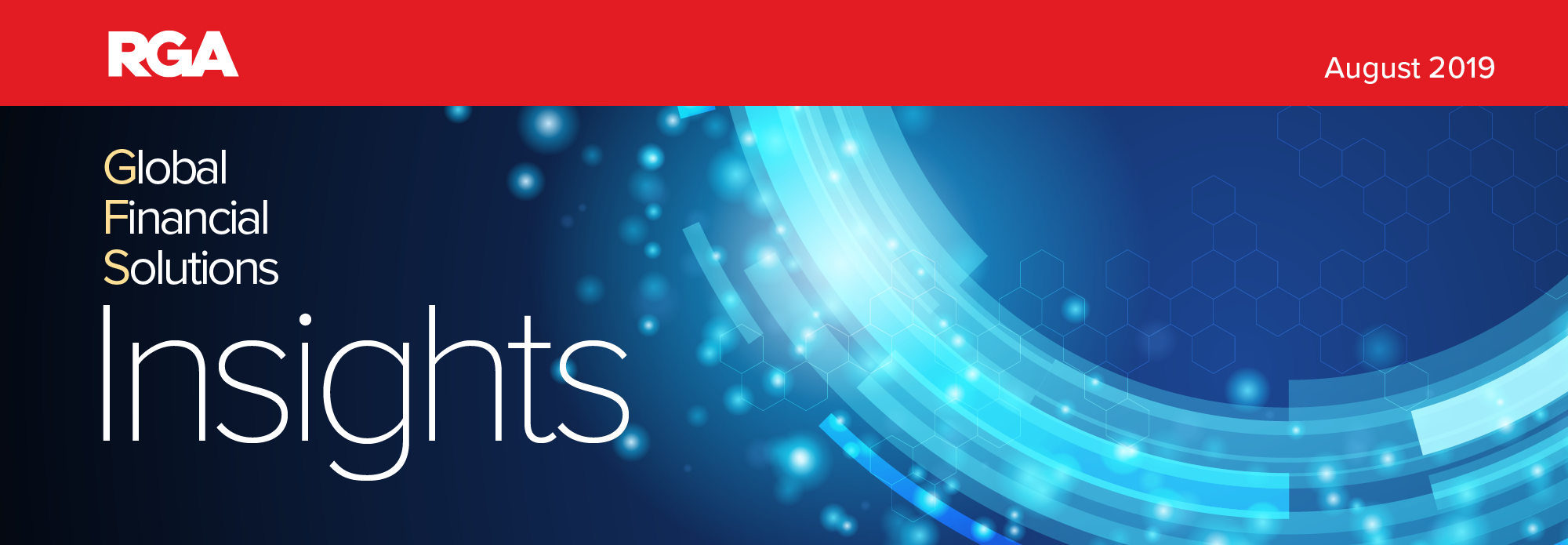
Financial Reporting Changes Coming Soon
The cornerstone of U.S. GAAP accounting for insurance contracts is Financial Accounting Standard 60 (FAS60), which was released June 1982. In 2009, as part of the Financial Accounting Standards Board’s codification project, the requirements of FAS 60 were incorporated into “Financial Services – Insurance (Topic 944),” usually referred to as Accounting Standards Codification 944 (ASC 944).
The approach prescribed by FAS60 was designed to provide a reasonable profit emergence for insurance products written at the time, but taking into account the companies’ IT capability at the time the standard was developed. A notable outcome of the approach is that valuation assumptions for long-duration contracts are set at policy inception and are not updated over time unless blocks of business are expected to become loss-making.
For a few years, the FASB worked with the International Accounting Standards Board (IASB) in an attempt to establish a global insurance accounting standard, but later concluded that U.S. GAAP accounting for insurance did not need a fundamental rewrite. Instead they determined that many of the FASB’s goals could be met by making a series of targeted improvements.
In August 2018, the FASB released Accounting Standards Update 2018-12 titled “Targeted Improvements to the Accounting for Long-Duration Contracts” (LDTI). In this article, we detail these accounting rules changes, how they might impact your company’s operations and business, and how you can prepare for them.
Q: What is LDTI changing?
A: The updated standard makes changes to reporting in four areas:
Benefit Reserve:
- Benefit Reserve is calculated as present value of expected claims less Net Premium Ratio multiplied by the present value of expected premiums. Net Premium Ratio is set so that reserve equals zero at contract inception.
- Net Premium Ratio at contract inception is recalculated at each valuation date, with actual cash flows replacing expected cash flows where available.
- Cash flow assumptions should be reviewed on an annual basis or more frequently if evidence suggests that cash flow assumptions should be revised. Impact from changes in cash flow assumptions would be reflected in net income.
- Provision for risk of adverse deviation and premium deficiency tests will be eliminated. Instead, net premium ratio will be capped at 100%. Loss recognition testing is retained for universal life-type contracts.
- Discount Rate is prescribed as upper medium grade fixed income instrument yield. This is being interpreted as consistent with the ‘A’ credit curve. Changes in the value of the liabilities due to changes in the discount rate are shown as accumulated other comprehensive income (AOCI).
Deferred Acquisition Costs (DAC):
- DAC for all contracts sold by insurance companies (including universal life and investment contracts) will be amortized on a constant basis over the expected life of the contract. In practice, there is a policy choice of using a straight line amortization over the expected life, calculated at a contract level, or a grouped approach that provides a reasonable approximation of the individual contract approach.
Market Risk Benefits (MRBs)
- While there are other examples, MRBs generally refer to riders on variable and fixed index annuity contracts.
- New standard requires that MRBs are all measured at fair value, with changes due to own credit risk shown in AOCI.
Disclosures:
- Insurance companies must now provide more detailed disclosures in financial statements. In particular, a roll forward of the present value of net premiums and future benefit payments must be provided in the disclosures.

Q: How will LDTI impact my business?
A: The LDTI will have financial and operational repercussions. Financially, profit can emerge very differently under the updated standard, particularly if experience deviates from that initially expected. Generally, actual experience is significantly offset by reserve changes, whereas a large portion of the impact from changing assumptions emerges in the period when the assumption change is made. Changes in the balance sheet at transition could also be significant for some product lines at some companies. For example, contracts currently valued based on the 8% interest rate available at issue many years ago could switch to use a rate of less than 4% now.
Operationally, valuation and data management will become much more complex because of the new disclosures. Multiple projections of future contract cash flows will be needed, along with grouping and tracking of cohorts of policies. Financial statements will become larger with new balance roll-forward disclosures. Because periodic valuation assumption reviews will become relevant to financial performance, assumption management processes will receive much more scrutiny. As additional valuation runs will be needed, many companies may have to push their existing systems beyond their current capacity, so increasing or outsourcing their computing power may be required.
Another aspect of the operational impact relates to staffing. Companies need to look at the current capacity and skill sets of their valuation and financial reporting teams. The work and skills needed for financial reporting will only increase. While many companies are expecting to build efficiencies or implement automation, they will need to perform more work during a financial reporting window that generally is not getting larger. Training, staff capacity, and operational models will need to be reexamined.
Q: When will it go into effect?
A: While the industry has some concerns about how to properly apply parts of the updated standard, most of the concern centers on the short implementation period, which has recently changed. On July 17, 2019, the FASB tentatively deferred the effective date for large listed companies by one year, now effective for reporting periods beginning on or after January 2022. Smaller listed companies will have a two-year deferral and other companies will have a three-year deferral in effective date.
It should be noted that to meet the requirements for a January 2022 effective date, two prior years of comparative financials must be provided at transition. From that perspective, LDTI reporting will be required for 2020 and 2021 as well.
Q: The new standards for U.S. GAAP were released in 2018. I heard that these standards are open to interpretation, and that there has just been a tentative delay to the effective date. How can we hit a moving target?
A: Not every detail is explicit on how these new standards should be interpreted or implemented. There are also a number of strategic decisions that a company must make in consideration toward the broader impacts of the new requirements. While you should anticipate shifts to interpretations and other developments along the way, the core of what is to be done and why is explicitly understood. Many of the strategic decisions to be made will require testing the impact of alternatives. This work is best started early.
Q: What strategies can I adopt to best handle it?
A: Like many things, what is needed to get somewhere new depends on where you are starting from. A gap analysis is a critical initial step to understand what capabilities you have now and compare these to what will soon be needed. One approach is to start from the end financial statements and work back through all processes to administration systems that provide the initial data.
Q: What resources do I need?
A: The new standard will affect the whole company, but in most cases, the largest impact will be on the finance, valuation, and IT teams. The first step is estimating and then getting agreement with management on the size of the project, but overall implementing the changes is likely to be an expensive undertaking for most companies because of the additional resources that will be required, stemming from having to reprioritize other work (which is difficult given other important initiatives such as principle-based reserving), adding permanent or short-term staff, or temporarily moving staff from other teams.
Q: What are other companies doing? What are the best practices?
Many larger companies are outsourcing computing capacity. By moving actuarial systems to cloud-based providers, companies can purchase computing power that scales up and down with the cyclical demand inherent in financial reporting.
Many companies are using external advisors for initial gap analysis and implementation strategy work as well. This can also be a way to gain more information on what others in the market are doing. Industry groups are also up and running to help companies share their opinions and learnings.
Given the potential level of disruption and change needed for implementation, most companies are taking a “compliance plus” approach, whereby they are looking to enhance overall systems and processes while making any changes necessary for compliance. The only issue is whether their projections for how much time all of this change will take are realistic.
Project and change management are also key areas of focus. The effects of these changes can reach far beyond finance and valuation functions into areas such as investor relations, human resources, risk management, product development, and pricing. Adequate communication, education, and understanding how the necessary changes will interact with and affect different areas of the business are needed to prevent surprises and avoid unnecessary scrambling after the fact.
Q: How is RGA getting ready?
RGA began its project to implement LDTI changes of in the latter half of 2018. While we have made significant progress, there is still much work to complete so that we can produce high-quality accounts under the new standard in the required timeframe.
Q: Can RGA provide solutions I can use?
A: Companies with blocks of long-term business that are no longer considered core or relatively small for that company could consider selling that block to simply avoid these implementation challenges. More broadly, RGA would be happy to discuss your unique challenges, share implementation advice, and consider any reinsurance solutions that could be of benefit before or after the changes in accounting rules.

